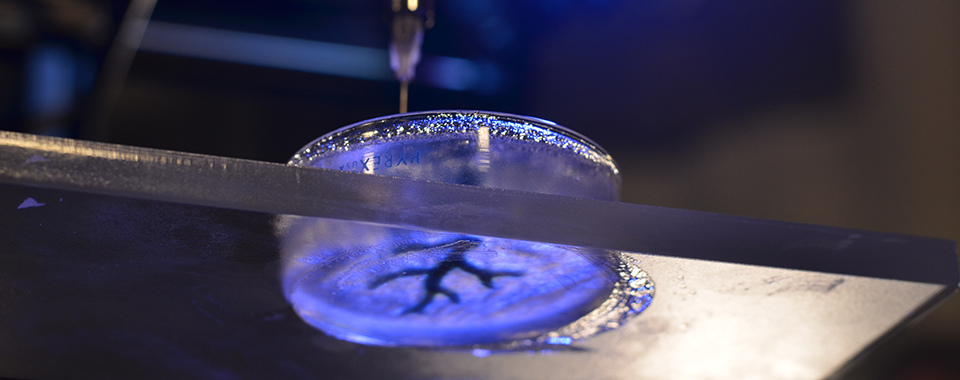Low-Cost Human Organ Printing

Latest News
November 16, 2015
Groundbreaking research at Carnegie Mellon could edge us closer to the printing of human organs — and researchers there made the advancement using a low-cost printer.
We’ve written before about researchers printing medical implants and even soft tissue before, but in those cases that has involve the use of specialized or at least heavily modified printing equipment and materials. Specialized bioprinters can cost upwards of $100,000, putting them out of reach of most research and healthcare facilities.
What’s fascinating about the Carnegie Mellon work is that they were able to print living tissue using an off-the-shelf printer that only cost $1,000. The researchers also came up with a technique to eliminate the rigid frames that would otherwise be required to support the weight of the printed tissue.
Their work was published in Science Advances.
“We’ve been able to take MRI images of coronary arteries and 3-D images of embryonic hearts and 3D bioprint them with unprecedented resolution and quality out of very soft materials like collagens, alginates and fibrins,” said Adam Feinberg, an associate professor of Materials Science and Engineering and Biomedical Engineering at Carnegie Mellon University, and leader of the Regenerative Biomaterials and Therapeutics Group.
The team at Carnegie Mellon developed a gel that can support the organs being built. Once the organ is complete, the gel is then melted away. The technique has been dubbed FRESH (Freeform Reversible Embedding of suspended Hydrogels). That approach could make the printed organs less likely to be rejected by the patient’s immune system.
They printed proof-of-concept structures based on femurs, branched coronary arteries, trabeculated embryonic hearts and human brains that were “mechanically robust and recreated complex 3D internal and external anatomical structures,” according to the report. The team plans to incorporate real heart cells into the printed tissue structures in the next phase of its research.
The researchers modified a number of low-cost printers using open-source hardware and software.
“Not only is the cost low, but by using open-source software, we have access to fine-tune the print parameters, optimize what we’re doing and maximize the quality of what we’re printing,” Feinberg said. “It has really enabled us to accelerate development of new materials and innovate in this space. And we are also contributing back by releasing our 3D printer designs under an open-source license.”
Source: Information Week
Subscribe to our FREE magazine, FREE email newsletters or both!
Latest News
About the Author
Brian Albright is the editorial director of Digital Engineering. Contact him at [email protected].
Follow DE





